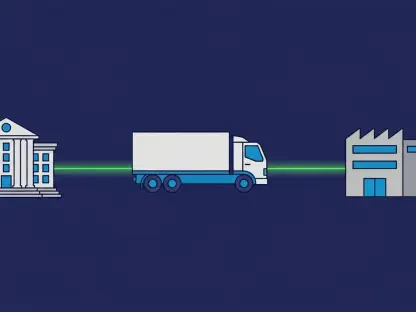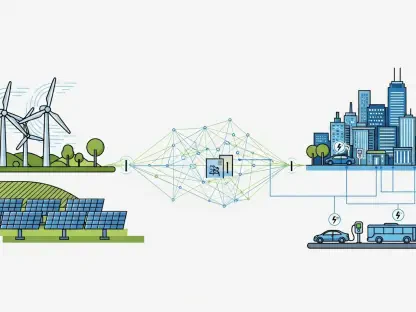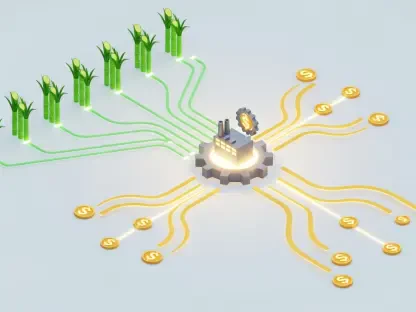The push towards a decarbonized future has created a pressing need for coordinated energy infrastructure planning. With increasing reliance on renewable energy sources and the electrification of various sectors, the energy system’s complexity is growing exponentially. The success of this transition hinges on a holistic and integrated approach to infrastructure development.
Increasing Complexity of Energy Systems
Decentralization and Renewable Integration
The shift towards a cleaner energy future is marked by the decentralization of power generation and the integration of renewable energy sources such as wind and solar. Traditional centralized power systems are being complemented and, in some cases, replaced by localized renewable generation, which presents unique challenges and opportunities. Additionally, the introduction of new energy vectors like hydrogen and the rise of electric vehicles (EVs) contribute to the evolving energy landscape.
The decentralization process involves multiple small-scale installations, often closer to the point of use, compared to large, centralized power plants. This transition helps to reduce transmission losses and increase resilience to network failures. However, it also presents significant logistical challenges, including the need for advanced grid management technologies and the integration of various energy storage solutions. Managing this diverse and widespread generation landscape requires sophisticated control systems and real-time data analysis to balance supply and demand effectively.
Electrification of Industries and Transport
As industries and the transportation sector move towards electrification, the demand for reliable and extensive power infrastructure becomes critical. Electric vehicles and industrial electrification require robust charging infrastructure and significant grid enhancements. However, implementing these changes is not straightforward, as it involves intricate planning and often faces the so-called “chicken and egg” dilemma—whether to develop infrastructure first or simultaneously with the uptake of these technologies.
This dilemma is particularly evident in the rollout of EV charging stations. Without a sufficient number of charging stations, consumers might be hesitant to adopt electric vehicles, yet building extensive charging infrastructure without an adequate number of EVs on the roads can be economically unviable. A similar challenge exists for hydrogen technologies, which are crucial for sectors where electrification is not feasible. The development of these hydrogen-based solutions has been slower than expected, as noted in reports by the International Energy Agency (IEA) and DNV. Consequently, careful, synchronized planning is essential to ensure that the infrastructure can support and encourage the adoption of these new technologies.
The Need for Coordinated Infrastructure Planning
Cross-Sectoral Integration
Effective energy infrastructure planning requires breaking down silos across various sectors such as electricity, gas, heating, and transportation. The value of an integrated approach is paramount, particularly in enhancing the efficiency of resource allocation and minimizing waste. For instance, aligning electricity and heating networks can optimize energy use and improve resilience.
Successful cross-sectoral integration means recognizing the interdependencies and synergies between different utilities and services. Integrating electric, gas, and heating networks might involve shared resources, such as combined heat and power units or energy storage systems that serve multiple purposes. These integrated systems can respond more flexibly to fluctuations in supply and demand, ultimately making the energy system more efficient and resilient. The lack of an integrated approach might result in redundant investments and stranded assets that can be costly in the long run, jeopardizing both economic viability and environmental goals.
Long-Term Vision and Governance
A strategic, long-term vision is crucial for coordinated infrastructure planning. Projects such as the expansion of electricity grids and the development of gas pipelines have extensive lead times, often spanning decades. Establishing sound governance and setting clear objectives are vital steps towards ensuring that infrastructure can meet future energy demands and sustainability goals.
Sound governance involves setting up regulatory frameworks and institutions capable of overseeing the planning, development, and operation of energy infrastructure projects. This governance also needs to be adaptive, as technological advancements and market conditions can change rapidly. Long-term planning should be anchored in clear, forward-looking scenarios that consider various contingencies and technological breakthroughs. For instance, the ten-year network development plans play a pivotal role in modernizing grid infrastructure to accommodate renewable energy while ensuring stability and reliability. These plans should be well-aligned with national and regional energy strategies to create a cohesive roadmap towards a decarbonized future.
Addressing Major Challenges
The Water-Energy Nexus
One significant challenge is the interdependence between water and energy systems, known as the water-energy nexus. Energy production often requires substantial water resources, and water supply systems depend on reliable energy. Developing a holistic understanding and coordinated management of these interrelations is essential to avoid resource conflicts and ensure sustainable solutions.
For instance, hydroelectric power plants rely heavily on water availability, making them vulnerable to changes in water resources due to climate change or usage demands. Similarly, thermal power plants, including those that use renewable biomass, need substantial water for cooling processes. Conversely, the energy required for water treatment and distribution can’t be overlooked, especially in areas facing water scarcity or stressed resources. Addressing this nexus holistically necessitates modeling tools and policies that account for both sectors simultaneously, ensuring that improvements in one do not adversely impact the other. This interdisciplinary approach will help formulate balanced solutions that optimize resource use and foster sustainability.
Legislative and Regulatory Integration
For effective cross-sector planning, alignment of legislative and regulatory frameworks is crucial. Market rules, grid codes, and cost-benefit analyses must be standardized to guide investment and operational decisions. Additionally, establishing a supervisory body to inform disruptive technology planning will help integrate emerging energy solutions into the infrastructure roadmap.
Achieving legislative and regulatory integration involves creating a unified set of guidelines that all stakeholders can follow, reducing conflicts and inefficiencies. These rules should facilitate the smooth operation of integrated energy systems, ensuring that innovations like smart grids, distributed energy resources, and multi-fuel systems are effectively integrated and managed. A supervisory body would oversee the implementation and updates of these regulations, ensuring that they stay relevant in the face of rapid technological advancements. This body would also disseminate information about disruptive technologies, helping industries and governments make informed decisions and incorporate these innovations into their planning. Effective regulatory frameworks are crucial in creating a stable investment environment, encouraging private and public investments in new technologies and infrastructure projects.
Step-by-Step Integration of Coordinated Planning
Setting Direction and Vision
Developing a coherent planning vision and detailed scenarios is the first step towards integrated infrastructure planning. This involves understanding current energy needs, projecting future demands, and preparing for technological advancements. By using strategic foresight, stakeholders can build a comprehensive plan that guides efforts towards decarbonization.
These scenarios should consider various factors, including population growth, urbanization trends, and economic changes, as well as technological innovations and policy shifts. They must also be adaptable, providing flexible pathways that can adjust to unforeseen developments. Engaging a broad range of stakeholders from government agencies, industry sectors, and academia ensures that the planning vision is comprehensive and inclusive. Robust public engagement is also vital to gain societal buy-in and political support. The resulting vision will serve as a guiding framework, aligning various initiatives and ensuring that all efforts contribute towards a unified goal.
Technology and Research Integration
Addressing disruptive technologies and embracing innovation are key to ensuring that new solutions are effectively incorporated into infrastructure planning. A fully staged program that adapts research and development (R&D) efforts to support a decarbonized system is imperative. This includes prioritizing the development of new tools and methodologies tailored for cross-sector planning.
Research programs should focus on creating and testing innovative solutions that facilitate the integration of renewable energy, advanced storage systems, and smart grid technologies. Implementing pilot projects and demonstration sites can help assess the feasibility and impact of new technologies before wider deployment. Collaborative R&D initiatives involving academia, industry, and government can accelerate the development of effective tools and strategies. Importantly, these efforts should be aligned with international best practices and standards, fostering knowledge transfer and avoiding duplication of efforts. Investing in R&D ensures that the energy system evolves with technological advancements, maintaining its robustness and efficiency in the long run.
Regional and Sectoral Coordination
Modeling Tools and R&D Investment
Current modeling tools are primarily designed for sector-specific applications and lack the capability for comprehensive cross-sector analysis. Developing integrated modeling tools with common modular structures for scenario building and sensitivity analysis is crucial. A concerted R&D effort is needed to create and refine these tools, ensuring accurate and effective planning.
These new tools should account for the interdependencies among various sectors and provide insights into potential outcomes of different planning scenarios. For instance, energy consumption patterns in the industrial sector might influence the availability of resources for residential heating, and vice versa. By accurately modeling these interactions, planners can optimize resource allocation and minimize potential conflicts. Establishing a common modular structure for these tools allows for flexibility and adaptability, accommodating different regions’ specific needs and circumstances. This regional and sectoral coordination will facilitate a more holistic approach to energy planning, aligning local efforts with national and global objectives.
Knowledge Sharing and Best Practices
Establishing platforms for the rapid exchange of R&D knowledge and best practices is essential for coordinated planning. By sharing successful models and procedures, sectors can learn from each other and implement more effective strategies. This collective approach will accelerate progress towards a synchronized and efficient energy infrastructure.
Creating a dedicated cross-sectoral platform for knowledge sharing will enable stakeholders to stay updated on the latest developments and innovations. Regular conferences, workshops, and online forums can foster collaboration and disseminate valuable insights. Moreover, developing a comprehensive repository of case studies, technical papers, and best practice guidelines will provide a valuable resource for planners and policymakers. Collaborative efforts between countries and regions can also promote the adoption of successful strategies across different contexts. This synergy will ensure that best practices are implemented widely and that lessons learned from early adopters inform future initiatives, enhancing the overall efficiency and effectiveness of the coordinated planning process.
Conclusion
The drive toward a decarbonized future has created a significant need for coordinated energy infrastructure planning. As we increasingly depend on renewable energy sources and move toward the electrification of various sectors, the complexity of our energy system is growing rapidly. This shift involves integrating solar, wind, and other renewable energy forms into the grid while also addressing the expanding energy needs of electric vehicles, smart homes, and advanced manufacturing.
The path to a clean energy future is not just about adding more renewable sources but ensuring they work effectively within a unified system. This requires a holistic and integrated approach to developing our energy infrastructure. Coordinated efforts are essential to manage the intricate networks and interdependencies that arise when diversified energy sources must coalesce seamlessly.
Moreover, this transition necessitates substantial investments in modernizing the grid, enhancing storage capabilities, and improving energy efficiency across the board. Successfully navigating this transformation is crucial to achieving sustainability goals, reducing carbon emissions, and safeguarding the environment for generations to come.









